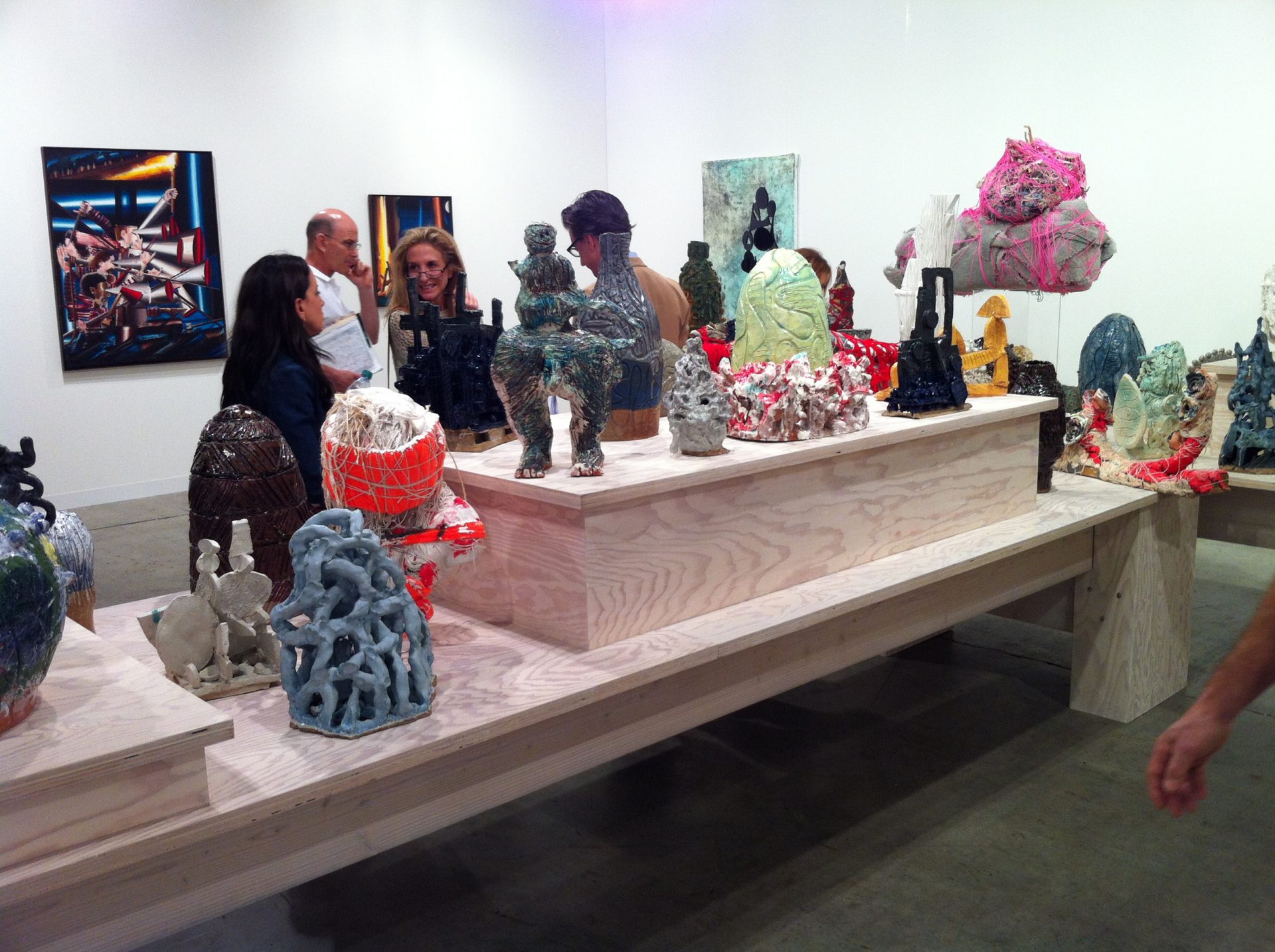Venice Biennale GENERATION BLANK by Jerry Saltz:
“The beautiful, cerebral, ultimately content-free creations of art’s well-schooled young lions.
I went to Venice, and I came back worried. Every two years, the central attraction of the biennale is a kind of State of the Art World show. This year’s, called “ILLUMInations,” has its share of high points and artistic intensity. (Frances Stark’s animated video of her online masturbatory tryst with a younger man hooked me; Christian Marclay’s The Clock, which captivated New York earlier this year, rightly won the Gold Lion Prize for Best Artist.) Yet many times over — too many times for comfort — I saw the same thing, a highly recognizable generic institutional style whose manifestations are by now extremely familiar. Neo-Structuralist film with overlapping geometric colors, photographs about photographs, projectors screening loops of grainy black-and-white archival footage, abstraction that’s supposed to be referencing other abstraction — it was all there, all straight out of the 1970s, all dead in the water. It’s work stuck in a cul-de-sac of esthetic regress, where everyone is deconstructing the same elements.
There’s always conformity in art — fashions come in and out — but such obsessive devotion to a previous generation’s ideals and ideas is very wrong. It suggests these artists are too much in thrall to their elders, excessively satisfied with an insider’s game of art, not really making their own work. That they are becoming a Lost Generation.
Our culture now wonderfully, alchemically transforms images and history into artistic material. The possibilities seem endless and wide open. Yet these artists draw their histories and images only from a super-attenuated gene pool. It’s all parsing, all the time. Their art turns in on itself, becoming nothing more than coded language. It empties their work of content, becoming a way to avoid interior chaos. It’s also a kind of addiction and, by now, a new orthodoxy, one supported by institutions and loved by curators who also can’t let go of the same glory days.
Consider the most celebrated younger artists on hand in Venice. A wall label informs that Ryan Gander’s color-squares on the floor derive partly from Mondrian’s. This not only defangs Gander’s art; it makes it safe for consumption. It is art about understanding, not about experience. Rashid Johnson’s mirrored assemblages have luscious physicality but are marred by their reliance on familiar mementos drawn from the recent past. (Unlike his influence, Carol Bove, whose Venice installation of modernist-looking objects opens uncanny windows on seeing, scale and memory, Johnson uses those objects merely as a crutch.) Seth Price’s glossy paintings with rope look like a slick cross between Martin Kippenberger and Marcel Broodthaers, ready-made for critics who also love parsing out the isms of their elders. A feedback loop has formed; art is turned into a fixed shell game, moving the same pieces around a limited board. All this work is highly competent, extremely informed, and supremely cerebral. But it ends up part of some mannered International School of Silly Art.
Art schools are partly the villain here. (Never mind that I teach in them.) This generation of artists is the first to have been so widely credentialed, and its young members so fetishize the work beloved by their teachers that their work ceases to talk about anything else. Instead of enlarging our view of being human, it contains safe rehashing of received ideas about received ideas. This is a melancholy romance with artistic ruins, homesickness for a bygone era. This yearning may be earnest, but it stunts their work, and by turn the broader culture.”
JERRY SALTZ is art critic for New York magazine, where this essay first appeared. He can be reached at jerry_saltz@nymag.com.
(Via artnet Magazine.)
